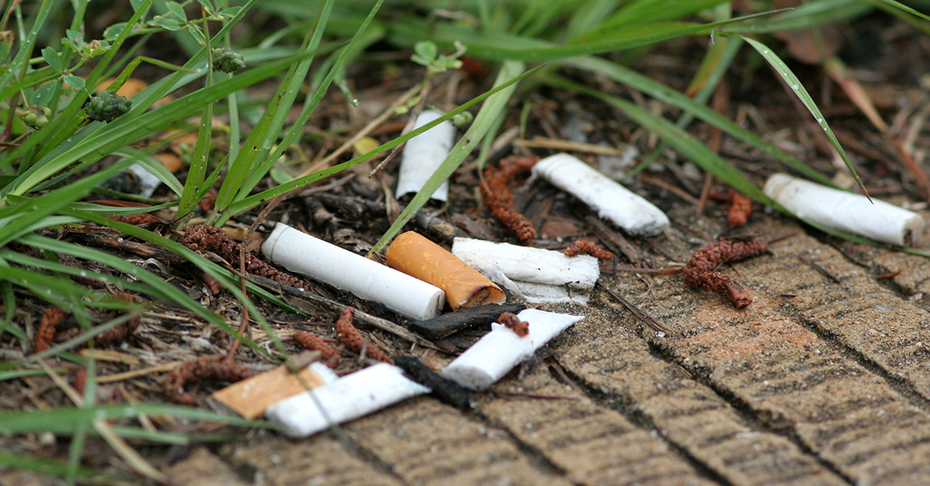CIGARETTES
- Cigarette butts have comprised 30%-40% of items collected in annual coastal/urban cleanups since the 1980s.
- Cigarette butts are the most prominently littered item on U.S. roadways, retail areas, storm drains, loading docks, construction sites and recreational areas.
- Globally, 1,134,292 cigarette butts were cleaned up in beaches and waterways in 2021, making them the world’s second most common type of litter after food wrappers, exceeding plastic bags and straws. Cigarette butts collected in U.S. beaches and waterways amount to over half of that figure making them the number one littered item collected by environmental cleanup crews in the U.S.
- However, not all cigarettes butts that are littered are collected. The 2020 Keep America Beautiful survey estimates that the actual number of cigarette butts polluting our environment is closer to 9.7 billion cigarette butts polluting roadways and waterways combined, along with 392 million pieces of other tobacco-related products and packaging, making up nearly 20% of all U.S. litter.
- Environmental cleanup efforts are a valuable and helpful endeavor, but they are not enough to combat the effect of littered tobacco. An overall reduction in tobacco use is essential to curbing the detrimental effects on fish, wildlife, public health, and water quality.
- 79% of smokers consider cigarette butts to be litter, but the majority of smokers (72%) reported littering a butt on the ground at least once in their lifetime and 64% reported tossing them out of a car window at least once in their lifetime.
- Smokers litter 47% of the cigarette butts they smoke.
E-CIGARETTES
- In 2020, Keep America Beautiful counted 894,700 littered e-cigarettes in U.S. roadways and waterways.
- According to a 2022 Truth Initiative survey, over two-thirds of disposable e-cigarette users disposed of the hazardous waste in the trash, where it can start fires in bins, waste trucks, or in waste processing facilities and 9% of young users littered their devices on the ground. Only 8% of young vape users disposed of their e-cigarettes properly through e-waste facilities.
- Inadequate or nonexistent safe product disposal guidelines from e-cigarette companies, a lack of recycling programs equipped to process e-cigarette waste, and limited federal guidelines inapplicable to the most popular variety of vapes and disposables, all contribute to the environmentally and publicly hazardous disposal methods common among young users.
- E-cigarette manufacturers do not provide guidance to consumers on how to dispose of used devices or pod/cartridge products, and there are no receptacles or specific processes in place.
- The average e-cigarette device has a short life span and is often replaced with a newer, more efficient version before it stops working. The average e-cigarette battery only lasts approximately 6-8 months with normal use.
- Disposable e-cigarettes are single-use plastic products designed to reach their end-of-life much more quickly.









